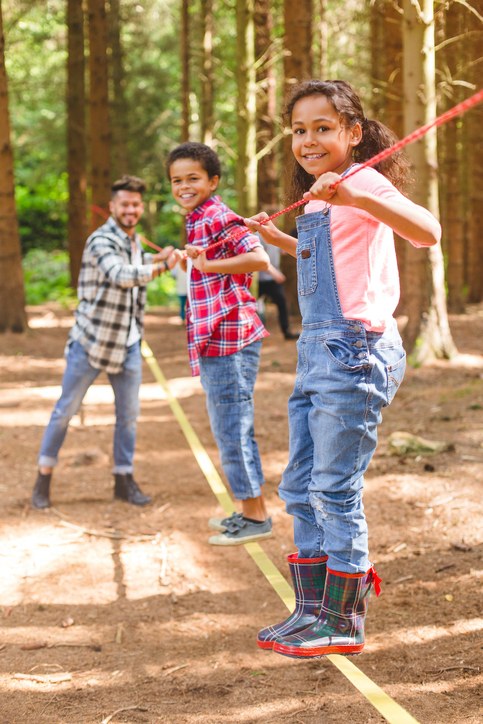Posted: February 14, 2017
Positive youth development (or PYD) is the “best practices” approach that after school, extended learning, out-of-school enrichment, and summer learning programs currently use to work with youth ages five through eighteen. What is it, where did it come from, and how does it contribute to youth success?

What is PYD?
The PYD approach means meeting youth where they are and building on their strengths. This means offering youth meaningful opportunities to learn and grow with the support of caring adults.
There are three parts to the PYD approach:
- Engage youth within their normal settings: family, school, and community.
- Build on the strengths of all youth.
- Emphasize the tools that help youth grow: strong relationships, activities that teach new skills, and leadership opportunities.
How did the PYD approach evolve?
Children and youth have a lot of discretionary time (time they can decide how to use for themselves), even during their normal school day. On an average school day, children between the ages of nine and fourteen spend about 37% of their waking hours on school and homework. They spend about 21% of their time in eating, grooming, and household chores. They spend the remaining 42% of their time in activities of their own choosing, including sports, reading, hobbies, and entertainment.
As economic and social changes occurred over the past 50 years, researchers and youth workers began to think more closely about how to make the best use of this large amount of discretionary time--that is, the children's available time, whether used for good or for ill.

After school and out-of-school programs evolved to provide safe places for children to spend their time after school, places to do homework, and to socialize with friends while their parents were at work. While these typical "after school" programs served an important function for families with working parents, they did not offer skilled professional leadership or enrichment activities.
Other out-of-school programs such as sports leagues, scouting, YMCAs, 4-H, and music and dance programs offered enrichment and skill building. However, these were not available or affordable for all youth, particularly disadvantaged youth. In urban areas, particularly, there were rising rates of violence, alcohol and drug experimentation, and teen pregnancy.
In the 1980s and 1990s, researchers began to focus on those youth growing up in disadvantaged areas who managed to succeed despite low income, high-risk settings, and other challenges. Researchers set about dissecting the "active ingredients" of resiliency that allowed one youth to succeed, while another in the same setting did not. Research uncovered three factors that were common to the lives of resilient youth, who succeeded in spite of the setting they lived in: caring relationships; high, clear, and fair expectations; and meaningful opportunities.
In 2000 the U.S. Department of Education established the 21st Century Community Learning Center Program. In this program, school districts partner with community agencies such as YMCA, Boys & Girls Clubs, and independent nonprofits to create school-based "learning centers." These after school programs provide additional learning and enrichment experiences for youth. The programs also offer services for members of the neighborhood, such as English language classes, job training, and health services.
The No Child Left Behind Act also contributed to the growth of school partnerships with community-based after school or out-of-school programs through federal fund support.
Since 2000, growing federal support has stimulated states and large cities to partner with corporations and foundations. The collaboration establishes networks of extended learning opportunities (ELOs) within schools. Some of these successful entities are LA's BEST, Sacramento's START, Boston's After School and Beyond, and ACT for Youth across New York State.
How does the PYD approach contribute to youth success?

The PYD approach is built on three necessary elements:
- Relationships with skilled, caring adults
- Meaningful learning activities
- Opportunities for leadership and voice
As they develop, children and youth need to form connections with adults outside their family members. Adults who understand developmental stages, and are caring, responsible, and knowledgeable, help youth broaden their perspectives about what it means to become an adult. Informal and frequent contact with respected and trusted adult mentors offer a chance for youth to question, explore, and figure out their own identity.
Children all follow the same developmental trajectory, but they are all individuals. They need a range and choice of appealing, meaningful activities to help them learn new skills and try out new activities. When youth experience these activities with peers, they learn social skills and self-regulation. Active, hands-on activities help children embed social skills and self-regulation, and develop multiple sensory and cognitive pathways for stronger learning.
A necessary skill for youth is to be able to act based on their own values and needs. To learn about themselves, and to be able to do things for themselves, children need to have experiences and learn practical skills. They also need to try things and make mistakes. When adults offer youth frequent opportunities to make choices and to experience the consequences of their choices, children gain the confidence to direct their own actions and become leaders.
Effectiveness of the PYD approach

In one large, eight-year study of almost 5,000 youth in 4-H PYD programs, Lerner and colleagues found that the youth in these programs differed from non-participating youth in several ways:
- Better grades
- Better behavior
- More engagement in school
- Less depression
- Less risky behavior
- More civic engagement
- More likely to plan to attend college
The good news is that many researchers have identified the principles of the PYD approach. These principles and practices are adaptable to any youth program. To learn more about how to practice PYD in your program, use Better Kid Care's modules on PYD.
For tips on getting started with PYD in your program, visit Positive Youth Development: An Introduction.
References
Piha, Sam, and Amy Adams. 2001. "Youth Development Guide: Engaging Young People in After-School Programming." Community Network for Youth Development.
Lerner, Richard M., Jacqueline V. Lerner, and Erin Phelps. 2009. "Waves of the Future: The First Five Years of the 4-H Study of Positive Youth Development." AgriLife Communications, The Texas A&M University System.
Youth.gov. n.d. "Positive Youth Development: Effectiveness." Youth.gov.

